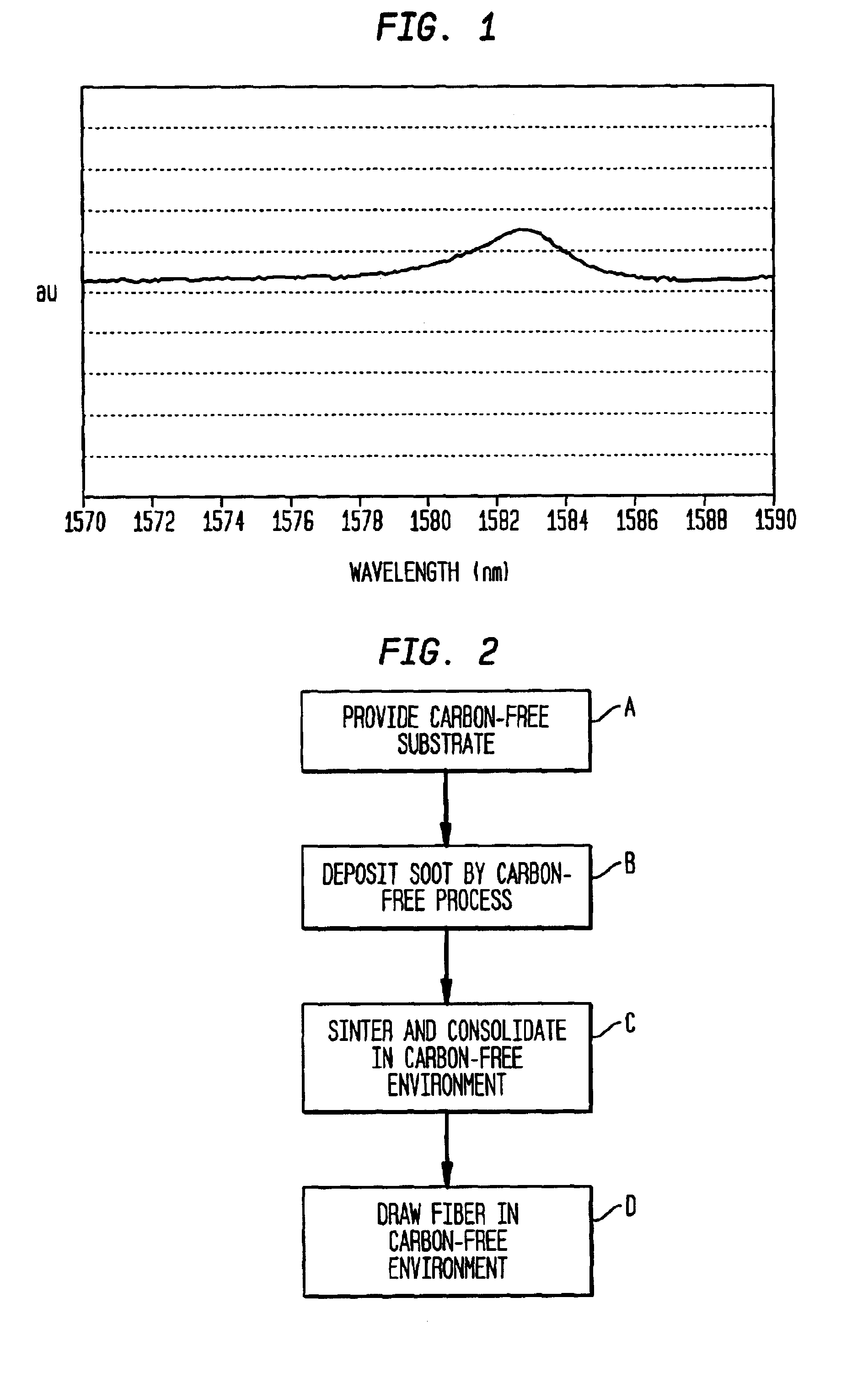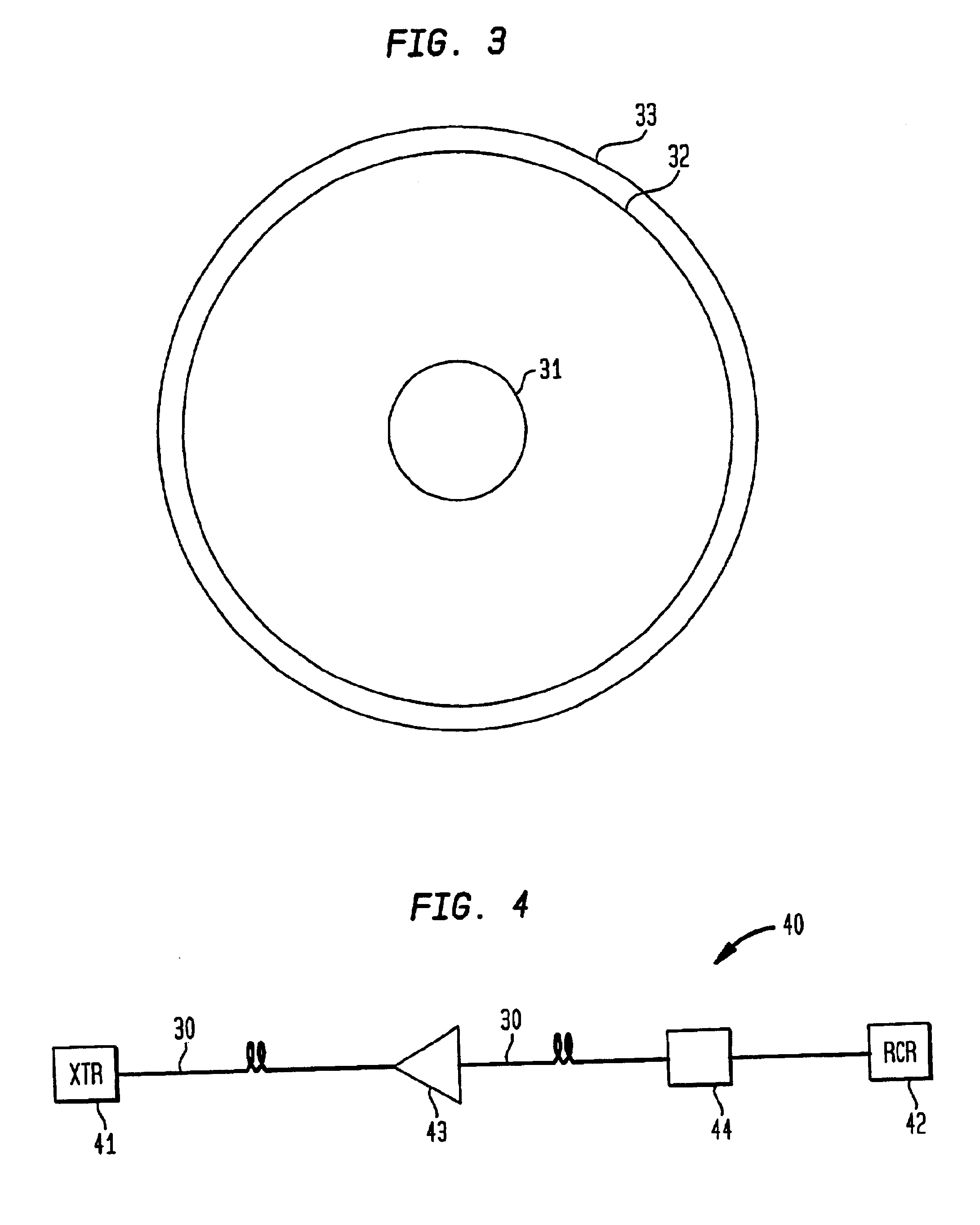Method of making optical fiber with reduced E-band and L-band loss peaks
a technology of optical fiber and loss peak, which is applied in the field of optical fibers, can solve the problems of loss peak, transmission channel dropout in amplified dwdm transmission system,
- Summary
- Abstract
- Description
- Claims
- Application Information
AI Technical Summary
Benefits of technology
Problems solved by technology
Method used
Image
Examples
example
A carbon-free starting tube comprising carbon-free silica is obtained from Heraeus Tenevo under the tradename F300. The tube is made by OVD without using carbon-containing reagents. It has dimensions 21.58 mm in ID and 28.0 mm in OD.
Glass soot is deposited on the interior surface of the starting tube by the MCVD process modified to be essentially free of carbon-containing reagents. In a specific case, the following conditions are used to deposit glass on the starting tube:
Carrier O2Carrier O2Excessfor SiCl4for GeCl4SF6O2HeCl2TempRegion(slpm)(slpm)(sccm)(slpm)(slpm)(sccm)Δ(C.)Core0.460.4902.04.000.3%2050Trench1.28022.02.03.20−0.1%2037-2100Collapse0000075.02100
The deposited soot is sintered and consolidated in a Cl2 environment essentially free of carbon-containing reagents, and the structure is collapsed into a solid preform rod. After collapse, carbon-free fiber is drawn from the preform in a carbon-free refractory furnace. The drawn fiber is coated with a conventional urethane meth...
PUM
| Property | Measurement | Unit |
|---|---|---|
| wavelengths | aaaaa | aaaaa |
| wavelengths | aaaaa | aaaaa |
| wavelengths | aaaaa | aaaaa |
Abstract
Description
Claims
Application Information
 Login to View More
Login to View More - R&D
- Intellectual Property
- Life Sciences
- Materials
- Tech Scout
- Unparalleled Data Quality
- Higher Quality Content
- 60% Fewer Hallucinations
Browse by: Latest US Patents, China's latest patents, Technical Efficacy Thesaurus, Application Domain, Technology Topic, Popular Technical Reports.
© 2025 PatSnap. All rights reserved.Legal|Privacy policy|Modern Slavery Act Transparency Statement|Sitemap|About US| Contact US: help@patsnap.com



